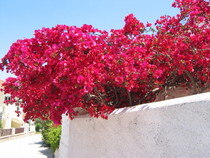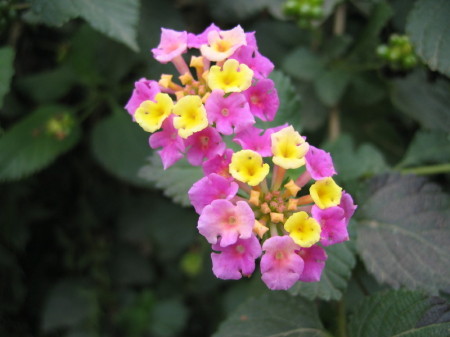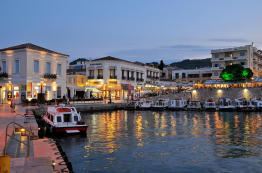Summer Flora
Summer Colours
There's a definite feeling that summer has started in Greece, when swallows, swifts and house martins swirl from all around, flitting in and out of the nests that they are preparing for their young. Cicadas and grasshoppers start to 'chirrup' from all corners of the garden and from along the bushy waysides. Dragonflies skitter from pond to pool and the water is at last beginning to be warm enough for us all to wallow in...
This may conjure up a relaxing image, but for those with gardens full of flora, then this dry season can be the most difficult. A war...and not only of the roses! Which plants will survive and which will die. The tasks of continuous watering, deadheading and weekly feeding for annuals, become an absolute must.
Showers are usually over by the first week of June. There may be unexpected thunderstorms, but that's just what they are – not expected... Automatic watering systems can be a great investment for larger flowerbeds (although it is worth keeping an eye on these, as they can be temperamental, due to electrical cuts and pipe damage etc). To avoid the water running down and away on bigger plots with slopes, it is a good idea to terrace them. It is advisable to water well on a weekly basis, rather than little and often, so that the water can reach the bottom of the soil and encourage a deeper root system. Pots need to be watered on a daily basis and early morning is best so that the plants are still moist when photosynthesis occurs.
In these warm months, a lot of tender loving care is absolutely essential and daily deadheading, although sometimes tedious, is necessary. This ensures that flowers keep their shape and continue to bloom for as long as possible, keeping your gardens bright and cheery.
With spring, and its marvellous show of bright and vibrant colour, just over – it is easy to assume that this dry Greek summer may be ready to sport a rather dead and withered appearance. This is, however, not necessarily so. Parts of southern Greece (particularly the more sheltered islands) are lucky to have gardens, courtyards and balconies with an array of rainbow coloured plants and shrubs, that bloom well into the month of July.
When seeding and planting in late winter/early spring, it is a good idea to include some of the following:
* Lilies – Madonna and the Regal in particular, are incredibly beautiful and double up with their heady fragrance on warm summer evenings. The Regal is easy to grow, manages well in pots and is happy in the shade.
*Plumbago auriculata – a shrub which spreads or climbs. The flowers are usually pale blue (although also white) and can be successfully seeded before going on to enjoy a life of full sunlight. Their bracts are slightly sticky and may happily stick to clothing.
*Larkspur – a wild flower but very popular in gardens or on balcony pots. It is deep blue and stands tall and erect.
*Lantana hybrids – evergreens with extremely bright colours – of which pink with yellow and orange with yellow are most often seen. They need little water and bloom all summer through to autumn. Beware though, they do not smell very pleasant and their berries are poisonous.
*Petunias (F1 hybrids) – in almost every colour – even stripey and starred. Easy to grow and enjoy full sun, but need feeding regularly. Potted together, with a few pansies, they make a stunning sight along a white wall.
Not forgetting, some good old Greek favourites , such as fruit trees – lemons, oranges and kumquats; the summer flowering hibiscus; the exotic, climbing bougainvillea with a choice of vivid colours; the popular and hardy geranium;the pink, white and dark red oleander (with its one disadvantage of being very poisonous) and the beautifully scented, climbing roses and jasmine.
Good gardening and Kalo Kalokeri!
SUMMER COLOURS: COPYRIGHT LUCY PARASKEVA












